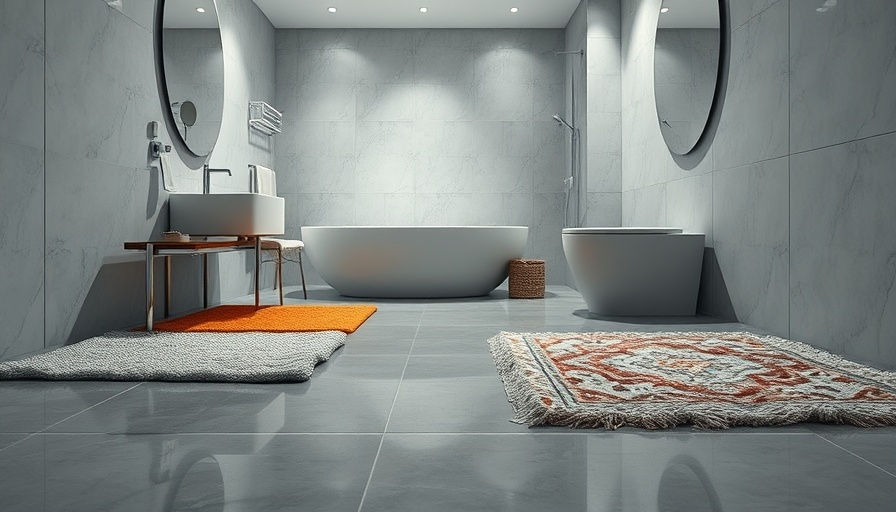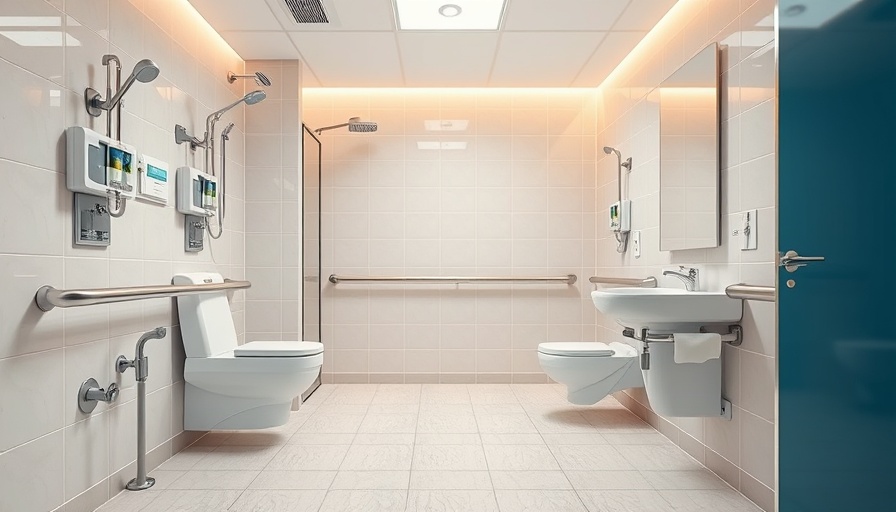
Understanding Your Bathroom's Hidden Dangers
Your bathroom is an essential part of your home, often a haven of relaxation, but it also harbors potential hazards that can lead to serious accidents. As our lives grow busier, the importance of ensuring a safe bathroom increases, especially for those over 55 who may have specific needs. Recognizing common bathroom safety blunders is not just helpful; it’s necessary to foster a healthier living environment. In this article, we will explore prevalent risks, actionable safety solutions, and how small adjustments can substantially alter the safety of your bathroom.
Spotting and Preventing Slips and Falls
Slipping and falling in the bathroom is a significant risk that affects many, particularly the elderly. The combination of wet surfaces and uneven floors sets a precarious stage for accidents. But there’s good news; with simple changes, you can significantly reduce these risks. Start by incorporating slip-resistant mats or rugs, specifically designed for wet areas, which provide traction and help avoid slips after showers or baths. If you or anyone in your home has mobility issues, installing grab bars next to toilets and bathtubs can offer essential support.
Furthermore, ensuring your bathroom is well-ventilated can prevent moisture buildup, making surfaces less slippery. Regularly check for leaks around sinks and bathtubs to keep the area dry. These proactive measures not only enhance safety but also prevent unforeseen accidents.
Smart Solutions for Chemical Storage
Bathrooms often store various cleaning products, but many contain harsh chemicals that can be dangerous if not handled properly. To ensure safety, invest in child-proof locks for cabinets that house these items, particularly if young children are around. It’s also wise to regularly inspect cleaning supplies, ensuring they are safely stored and clearly labeled.
Consider transitioning to non-toxic cleaning alternatives such as vinegar and baking soda. Not only are they effective, but they also reduce your exposure to potentially harmful chemicals. Remember, mixing cleaning products can lead to dangerous chemical reactions, so always follow the guidelines on product labels to ensure their safe usage.
The Case for Enhanced Bathroom Lighting
Poor lighting conditions can obscure hazards, making accidents more likely to occur. It’s crucial not just to see but to comprehend your environment to avoid mishaps. Make it a priority to install bright, adjustable lighting that illuminates all corners of the bathroom. This prevents shadows from hiding potential dangers, allowing you to navigate your space safely.
Consider installing nightlights as well, especially in hallways leading to the bathroom. These features can ease the transition from night to day and vice versa, blending safety with convenience.
Encouraging Safe Practices
Creating a safe bathroom goes beyond fixing existing dangers; it also involves fostering safe habits. When family members or guests understand the importance of keeping the bathroom clean and clutter-free, it helps maintain a secure space. Encourage everyone to keep items organized and to wipe up any spills immediately. This simple action can safeguard against accidents and promote a more pleasant bathing experience.
Gaining a Peaceful Mindset
The impact of a safe bathroom extends far beyond immediate physical safety; it offers peace of mind. Knowing you’ve taken the necessary precautions to protect yourself and your loved ones can alleviate stress and enable you to focus on enjoying your space rather than fearing what could go wrong. Additionally, consider involving family members in the safety improvements, turning maintenance into a bonding experience that teaches responsibility and the importance of safety.
Your Next Steps Toward a Safer Bathroom
As you absorb this information, take a moment to assess your bathroom. Implementing these tips can significantly impact your environment's safety. Remember, the responsibility of creating a safe bathroom falls on all of us, and there’s no better time to begin than now. Transform your bathroom from a potential hazard zone into a sanctuary of peace and safety.
If you find yourself hesitant to begin home improvement projects, consider reaching out to experts for assistance. Understanding your options can empower you in making informed decisions that enhance your living space.
 Add Row
Add Row  Add
Add 




Write A Comment